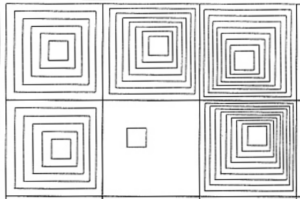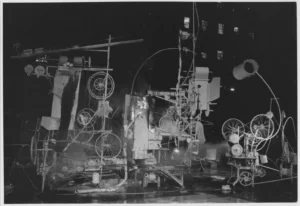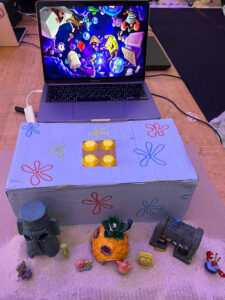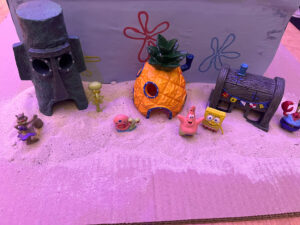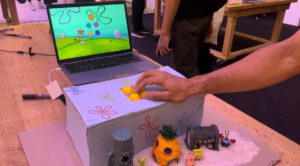CONCEPT:
Two artists have caught my eye for my concept: Vera Molnár and Dr. Bill. Vera Molnár’s use of grids and squares with small touches of randomness was something I thought of as cool and want to bring to my own piece, especially after watching Casey Reas and learning how randomness can create unique art pieces. Her piece “(Dés)Ordres” shows an example of balance between order and chaos by introducing little changes in color and shape within a structured grid (Molnár, 1974). I want to do something similar by using a grid of squares and making each square unique, creating a sense of predictability within the order. The second artist’s art, Dr. Bill’s, has inspired me to incorporate interactive elements into my artwork (Kolomyjec, n.d.). I plan to incorporate an interactive element where the colors of the squares shift as the viewer moves their mouse across the screen, making it engaging.
To be more specific about my design, I will use the loop function to add squares all over the canvas. However, like Molnár’s designs, I’ll also add squares within the squares, but I’ll be using randomness to change either how the square moves or how big it is inside the square, or the colors of the square. Also, I wanted to make it more interesting by picking one color on one side of the canvas that changes with the user and the mouse interaction with it. In addition to that, I wanted to make it a vibrant piece by adding random colors, but as I said, I’ll be choosing one specific color that changes within the interaction of the viewer and the mouse. Hopefully, by combining Molnár’s structured randomness with Dr. Bill’s generative interaction, I am aiming to create a dynamic and engaging piece, by working with order and unpredictability, to make something that evolves with each viewer’s interaction.
The images below are Vera Molnár and Dr. Bill’s work that inspired my piece:

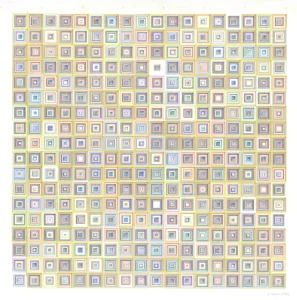
SKETCH:
HIGHLIGHT:
One part I’m really proud of is figuring out how to make the cubes “shake.” I used the “random()” function to add small random movements to the X and Y coordinates of each square. By setting “randomShakeX” and “randomShakeY to values between -3 and 3, the squares move slightly, creating a subtle shaking effect.
It took me a while to get this right and was the most time-consuming part about my code. I started out by testing different ranges for the movement and tested the effect with various square sizes. After some trial and error, I found the perfect balance where the shaking felt noticeable but not too chaotic. This part of the code may seem little, but it makes the design feel more dynamic and playful, which is something I was excited to achieve. In the end, I was proud of how it turned out because it brought my art piece together, which proved Casey Reas’s message of how small random changes can make a big difference in how a design feels.
heres a code snippet on how to do it:
// Adding random movement to create an effect of shaking (inner squares)
let randomShakeX = random(-3, 3);
let randomShakeY = random(-3, 3);
// Draw three inner squares with the shaking effect, decreasing in size.
rect(x + randomShakeX, y + randomShakeY, 30, 30);
rect(x + randomShakeX, y + randomShakeY, 20, 20);
rect(x + randomShakeX, y + randomShakeY, 10, 10);
}
}
}
REFLECTION:
One thing I learned from this assignment is how randomness can play a big role in art. It adds variety and surprises that make the piece more engaging. One thing I want to improve is to add more interactions with the user in my piece. For example, I had an idea where pressing a key on the keyboard would change the shapes, and using the arrow keys could adjust the size of the shapes. Along those lines, I’d like to eventually turn the art into a game where people can play with the shapes and make their own patterns that fit their personalities. It would be more fun to do this with the art piece.I’m happy with how the code turned out, though. It makes me feel like the art piece fits with who I am by being colorful and unique.
References
Kolomyjec, B. (n.d.). Dr. Bill, Generative Art OG. https://www.drbillkolomyjec.com/
Molnár, V. (1974). Désordres. Digital Art Museum. https://dam.org/museum/artists_ui/artists/molnar-vera/des-ordres/

